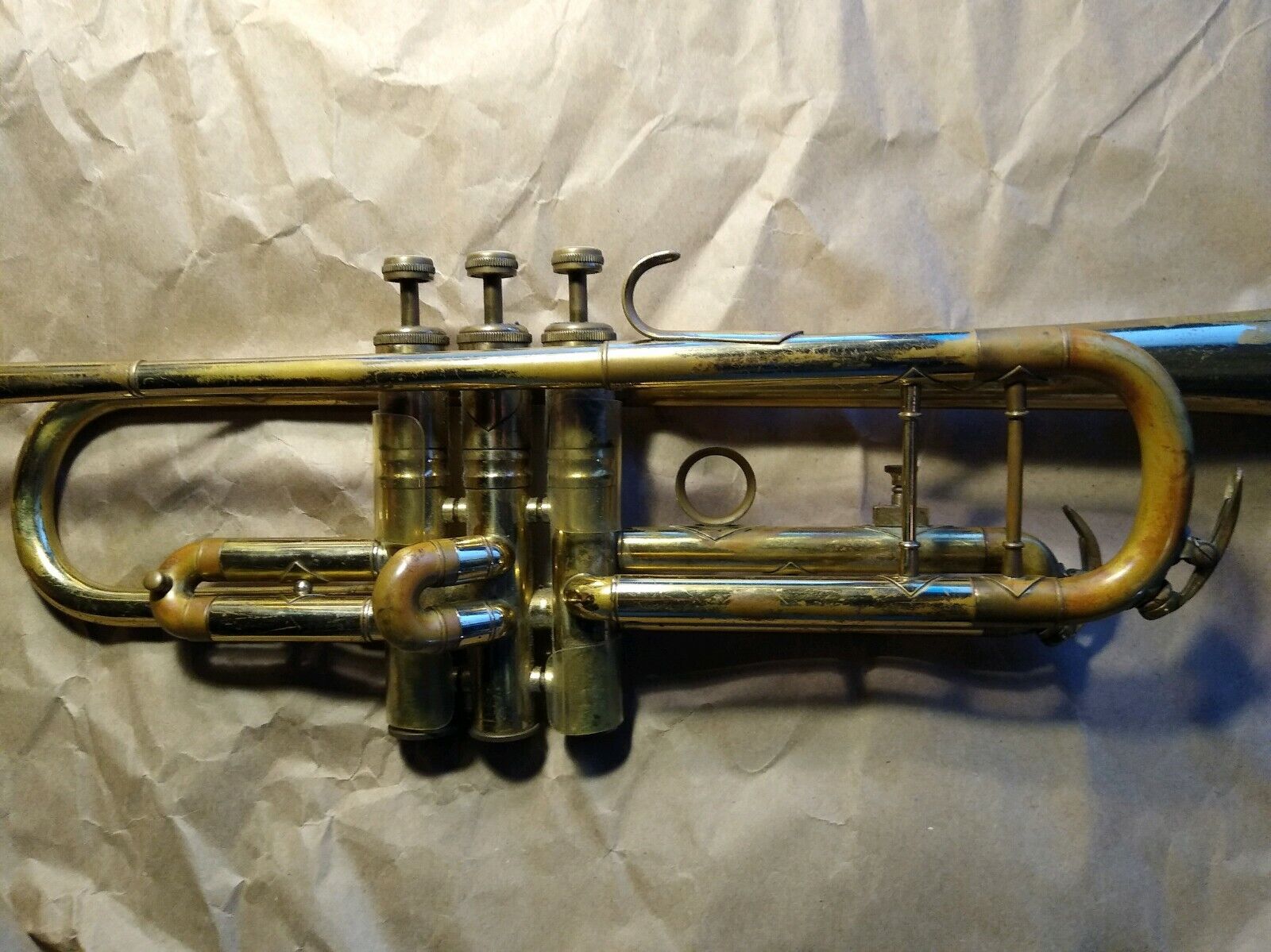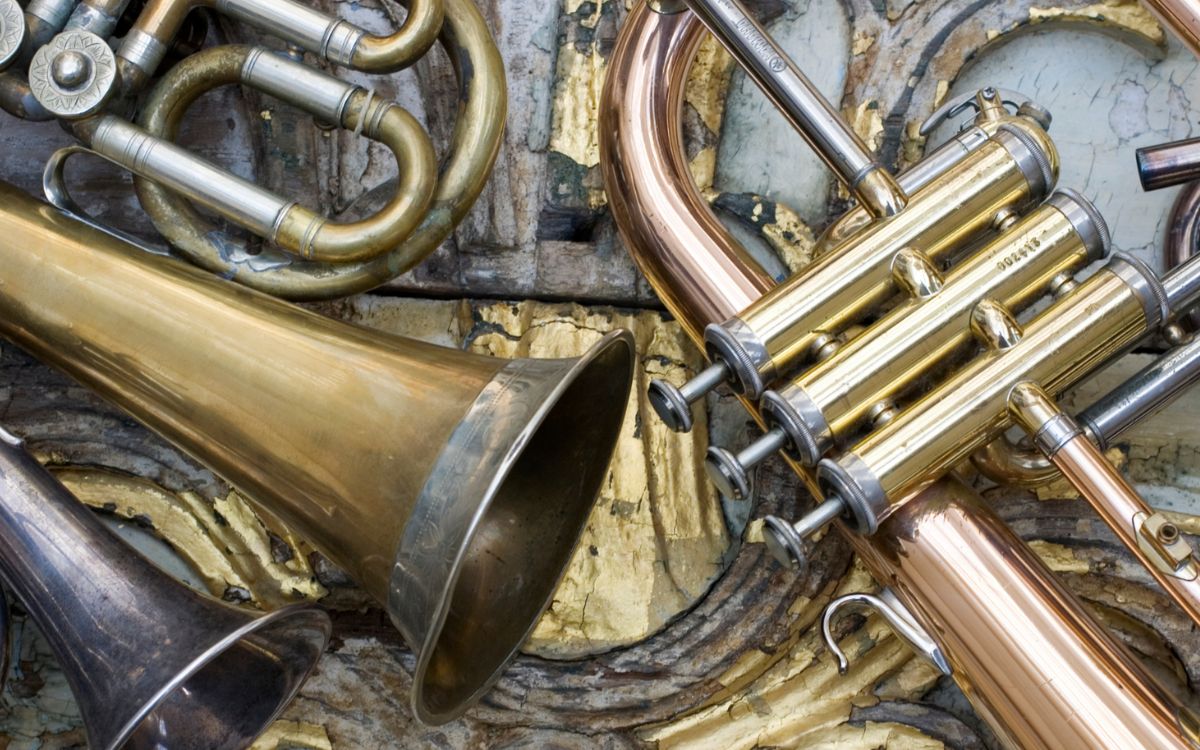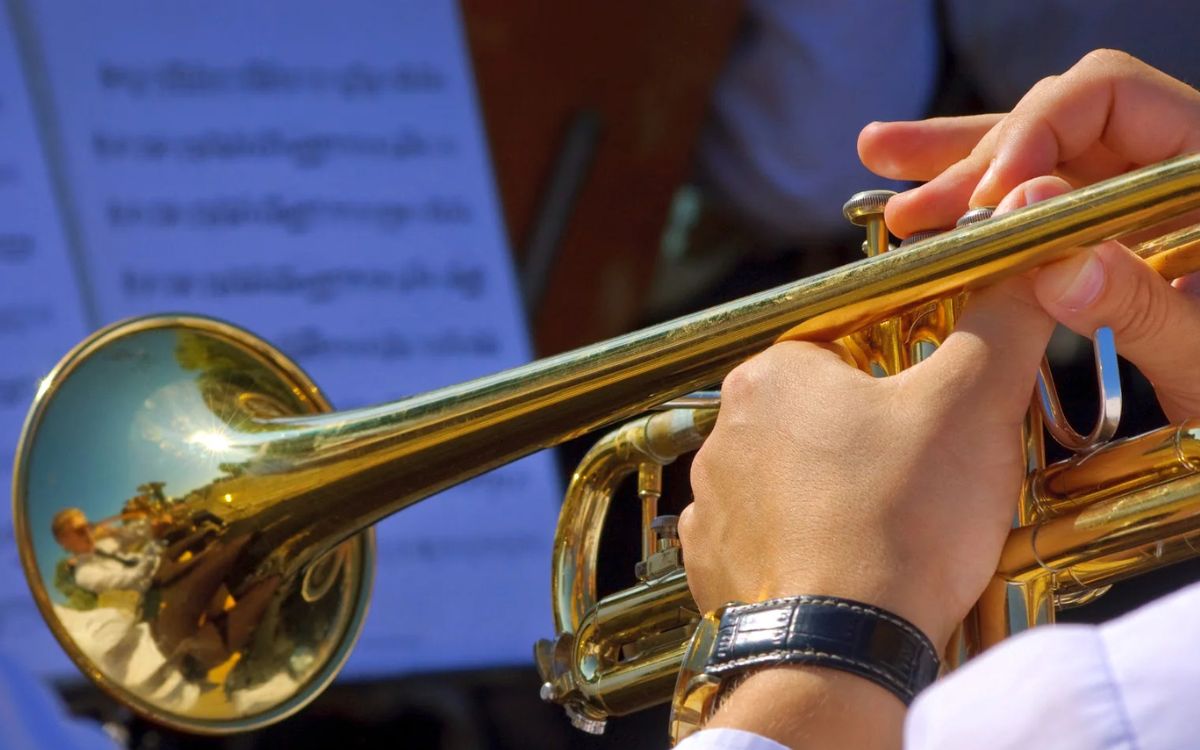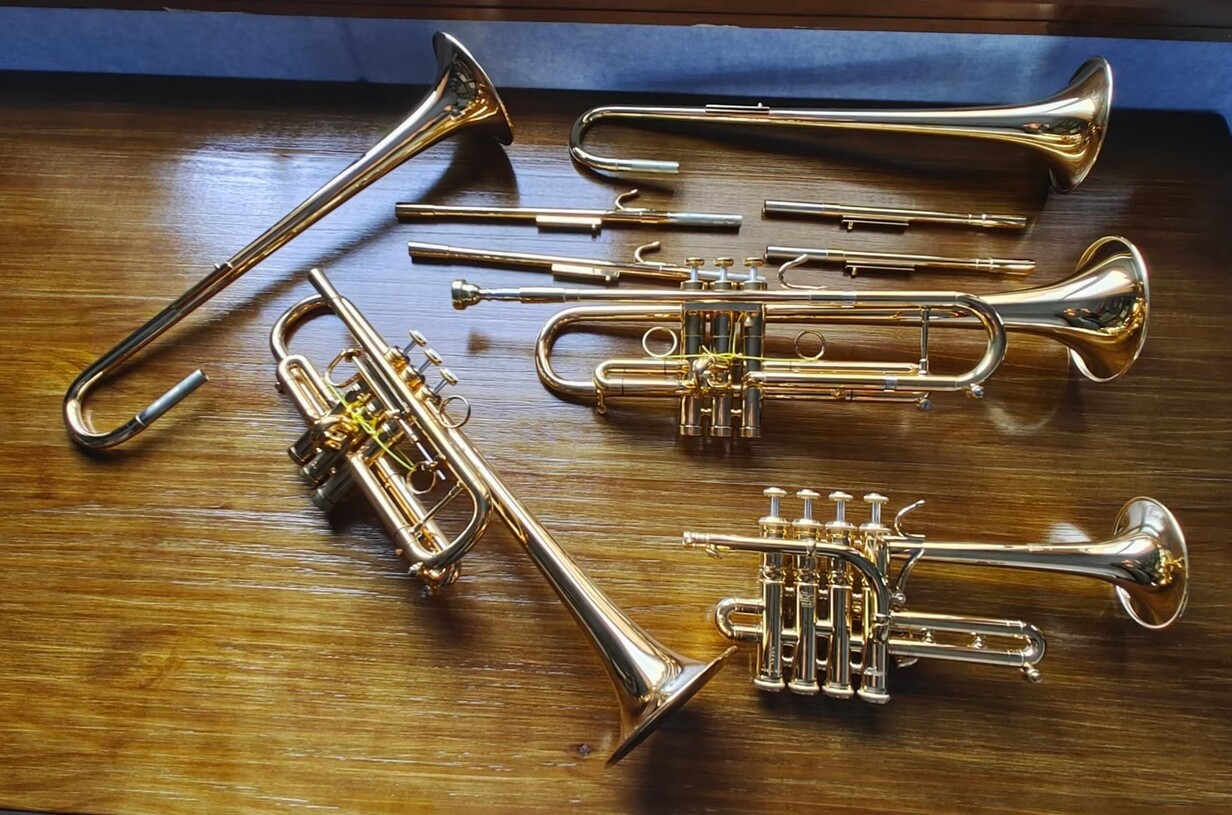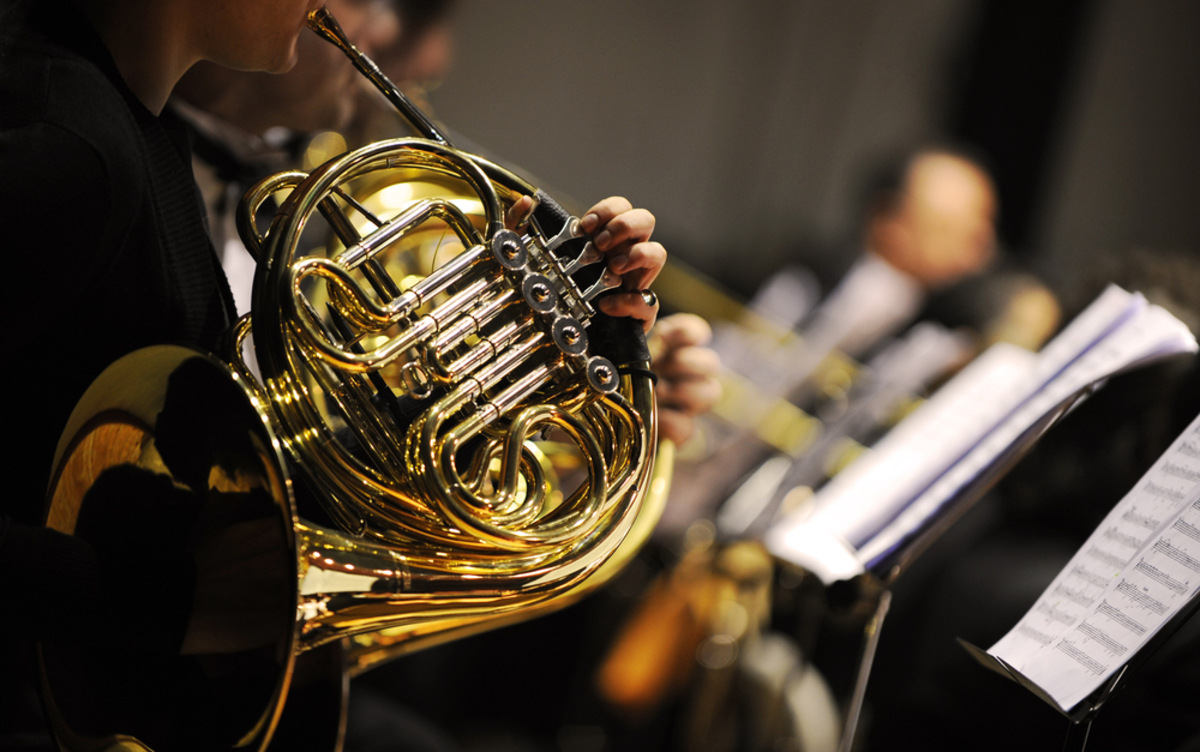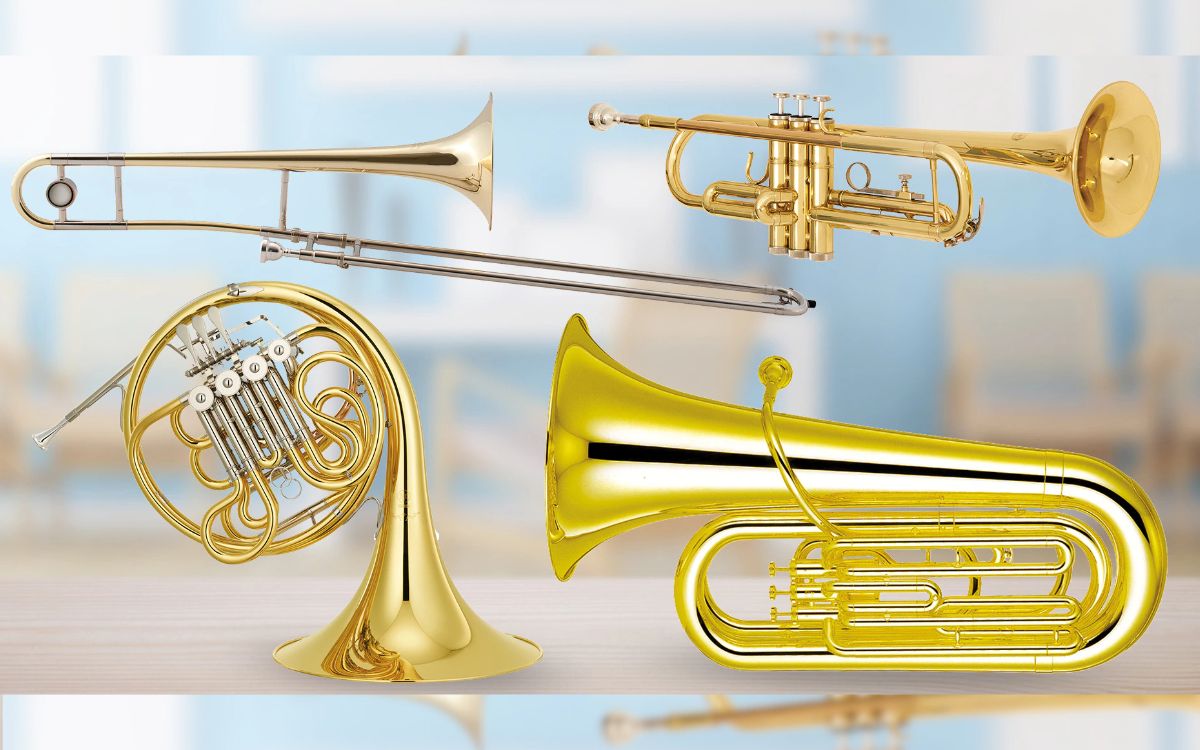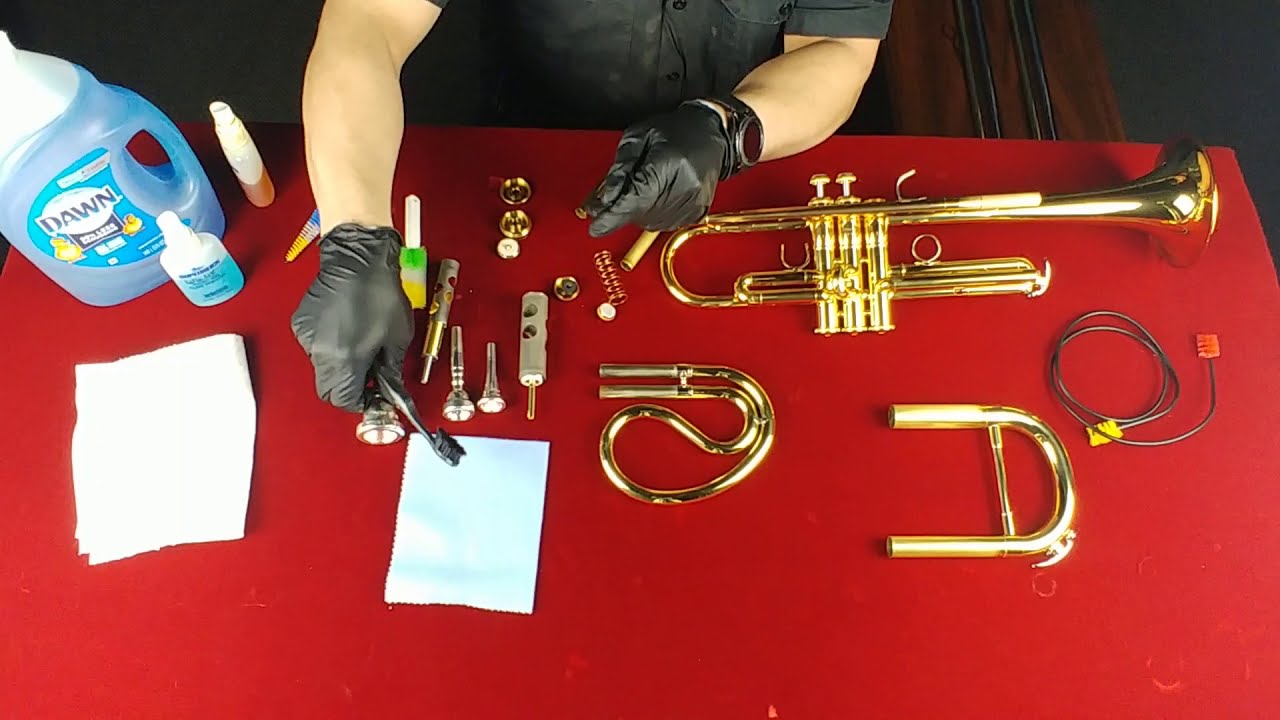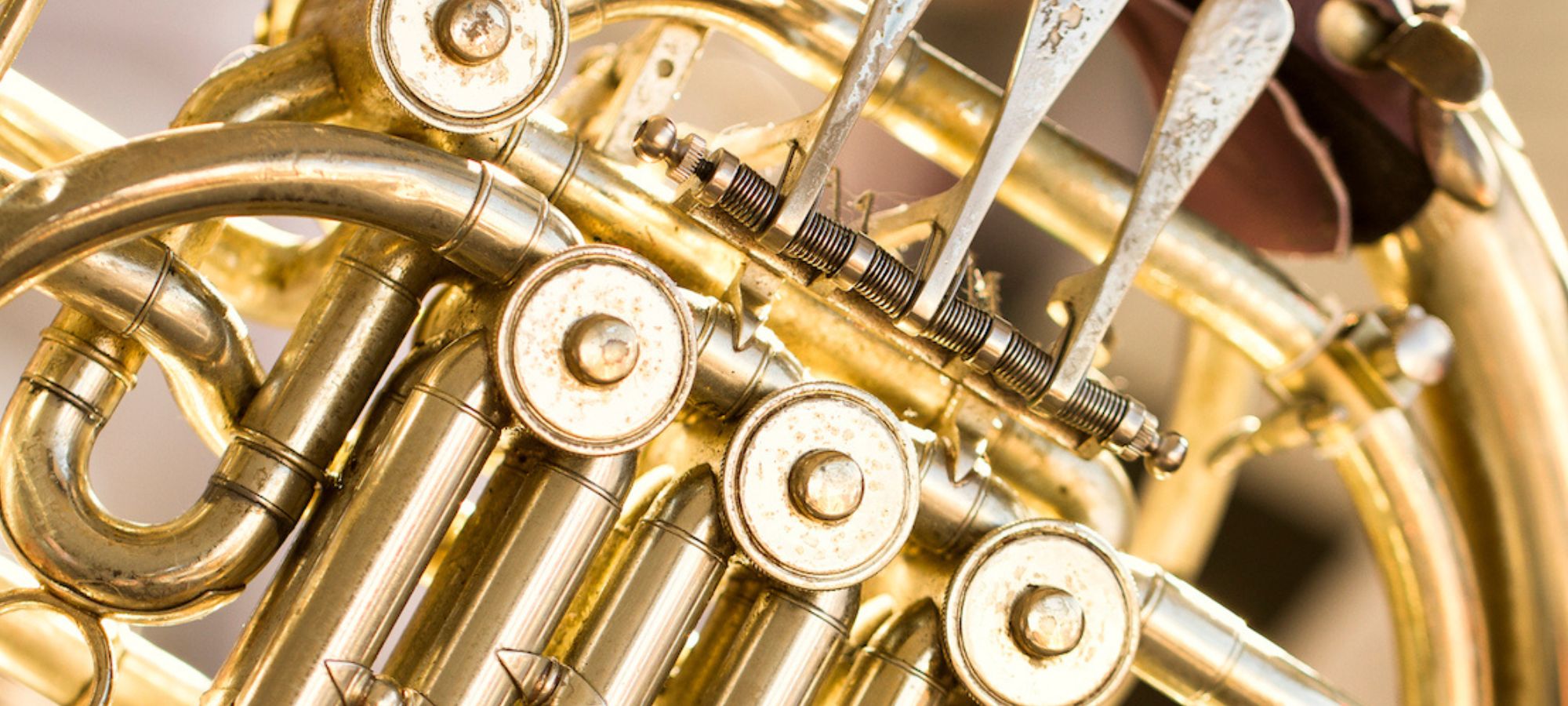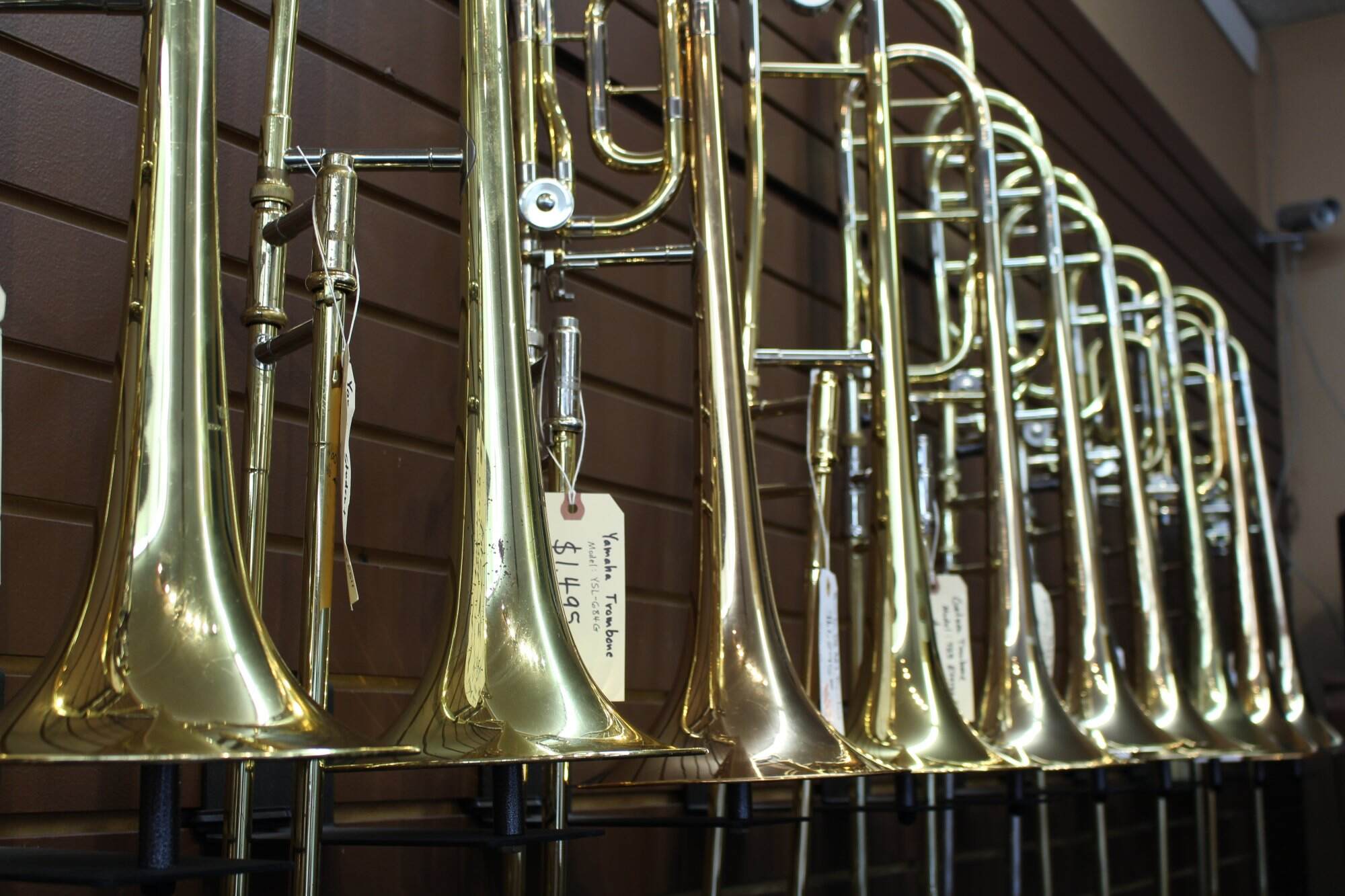Home>Instruments>Brass Instruments>How Are Brass Instruments Today Different From Those In The Baroque Era
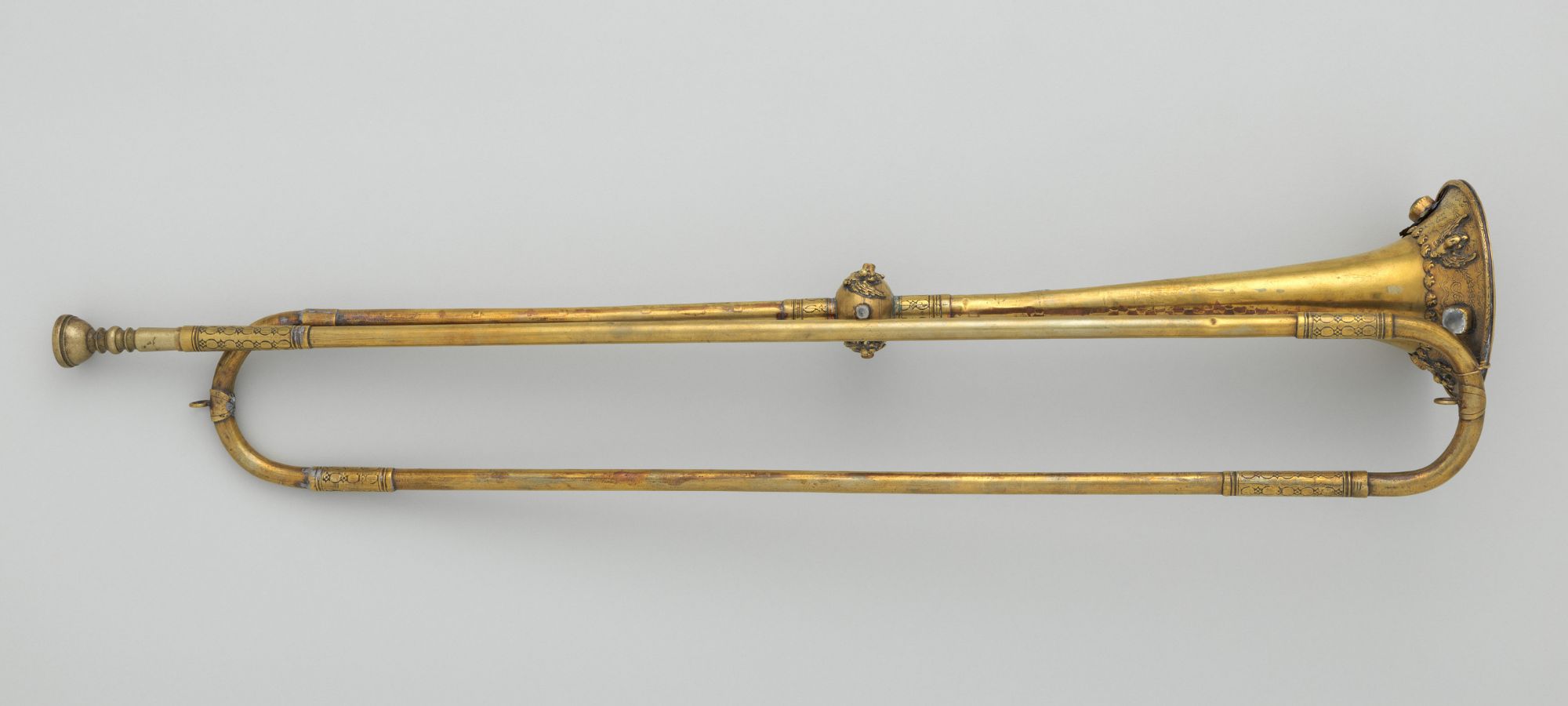

Brass Instruments
How Are Brass Instruments Today Different From Those In The Baroque Era
Modified: January 22, 2024
Discover the evolution of brass instruments from the Baroque era to the present day. Learn how modern brass instruments differ in sound, construction, and performance techniques.
(Many of the links in this article redirect to a specific reviewed product. Your purchase of these products through affiliate links helps to generate commission for AudioLover.com, at no extra cost. Learn more)
Table of Contents
- Introduction
- Evolution of Brass Instruments in the Baroque Era
- Types and Characteristics of Brass Instruments in the Baroque Era
- Modern Brass Instruments and Their Design Differences
- Materials Used in Brass Instruments: Then and Now
- Changes in Playing Techniques and Styles
- The Role of Brass Instruments in Baroque Music
- Comparison of Sound and Tone Quality: Baroque vs. Modern Instruments
- Conclusion
Introduction
Brass instruments have been a pivotal part of the musical landscape for centuries, providing a rich and resonant sound that adds depth and texture to various genres. From the regal tones of trumpets to the powerful melodies of trombones and the mellow warmth of French horns, brass instruments have captivated audiences and musicians alike.
In order to truly appreciate the brilliance of modern brass instruments, it is important to understand their roots. The Baroque era, which spanned from the 17th to the early 18th century, was a time of great innovation and development in the field of music. During this period, brass instruments underwent significant changes in design, construction, and playing techniques, setting the stage for the instruments we know and love today.
In this article, we will delve into the evolution of brass instruments from the Baroque era to the present day. We will explore the types and characteristics of brass instruments in the Baroque era, highlighting the key design differences that distinguish them from their modern counterparts. We will also discuss the materials used in the construction of brass instruments then and now, as well as the changes in playing techniques and styles that have shaped the sound and performance of brass instruments over time.
Additionally, we will examine the role of brass instruments in Baroque music and how they were utilized by composers to evoke different emotions and create diverse musical textures. Finally, we will compare the sound and tone quality of Baroque instruments versus modern instruments, shedding light on the advancements and improvements that have been made throughout history.
By gaining a deeper understanding of the evolution of brass instruments, we can better appreciate the craftsmanship, artistry, and innovation that goes into creating these remarkable musical instruments. So, join us on this journey through time and discover the fascinating world of brass instruments and their rich history.
Evolution of Brass Instruments in the Baroque Era
The Baroque era marked a significant period of transformation and innovation for brass instruments. During this time, advances in technology and musical composition led to the development of new and improved instruments that could produce a wider range of tones and play more complex musical pieces.
Prior to the Baroque era, brass instruments were relatively simple in design and consisted of basic tubing with a mouthpiece. However, during the 17th century, instrument makers began experimenting with new shapes and sizes, leading to the development of distinct brass instrument families.
One of the most notable advancements during the Baroque era was the creation of the valve mechanism. This innovative addition allowed players to change the pitch of the instrument by pressing down on a set of valves, expanding the range and versatility of brass instruments. The first valve, known as the “ventil,” was introduced in the late 17th century, followed by further refinements and improvements.
In addition to the valve mechanism, significant changes were made to the shape and proportions of the instruments. For example, the trumpet, which was traditionally constructed in a straight shape, began to be made with a longer, curved tube known as the “cornettone.” This modification allowed for improved intonation and a mellower tone.
The trombone also underwent significant changes during the Baroque era. While the instrument had been in existence for centuries, it was during this time that the trombone’s design was standardized, featuring a sliding mechanism that allowed for changes in pitch and a more flexible sound.
The French horn, or natural horn as it was commonly known during this period, also saw advancements in its design. The addition of hand-stopping techniques allowed players to produce a wider range of notes and create various tonal effects.
Overall, the evolution of brass instruments during the Baroque era revolutionized the capabilities and possibilities of these instruments. New mechanisms, innovative shapes, and enhanced playing techniques paved the way for the development of more sophisticated and expressive instruments that would continue to evolve in the centuries that followed.
Types and Characteristics of Brass Instruments in the Baroque Era
The Baroque era witnessed the emergence of various types of brass instruments, each with its own unique characteristics and capabilities. These instruments played an integral role in the music of the time, contributing to the distinctive sound and texture of Baroque compositions.
One of the most prominent brass instruments of the Baroque era was the trumpet. Trumpets during this period were typically made of brass or silver, featuring a cylindrical tube with a flared bell at the end. They had no valves or slides and were played by producing different pitches through the use of crooks or the addition of ventils. Baroque trumpets had a bright and piercing sound and were often used for fanfares, ceremonial music, and military signals.
The trombone, another important brass instrument, evolved during the Baroque era. Unlike trumpets, trombones were equipped with a sliding mechanism, allowing players to change the pitch through the extension and contraction of the slide. Baroque trombones had a rich and resonant sound, lending themselves well to both solo passages and ensemble playing. They were used in various musical genres, including church music, orchestral compositions, and chamber music.
The French horn, or natural horn, also made its mark during the Baroque era. These horns were characterized by their coiled shape, which allowed for a longer tubing and a wider range of notes. Initially without valves, players used hand-stopping techniques to alter the pitch and produce different tones. Baroque French horns had a warm and mellow sound, making them ideal for melodic lines and providing a beautiful harmonic foundation in ensemble settings.
Besides the trumpet, trombone, and French horn, other brass instruments of the Baroque era included the sackbut, a precursor to the modern trombone, and the serpent, a bass wind instrument with a curved shape resembling a snake. These instruments added depth and richness to the musical texture, particularly in church music and early orchestral pieces.
Characteristic of Baroque brass instruments was their limited range of notes compared to their modern counterparts. However, this did not hinder their expressive capabilities. Skilled musicians of the time used various techniques, such as ornamentation, vibrato, trills, and dynamic variations, to add nuance and emotion to their performances.
Overall, the types and characteristics of brass instruments in the Baroque era played an essential role in shaping the music of the time. Their distinctive sounds and unique abilities allowed composers to explore new musical territories and create compositions of great beauty and complexity.
Modern Brass Instruments and Their Design Differences
Modern brass instruments have undergone significant advancements in design and construction since the Baroque era. These improvements have led to instruments that are more versatile, responsive, and capable of producing a wider range of tones. In this section, we will explore the key design differences between modern brass instruments and their Baroque counterparts.
One of the most notable changes in modern brass instruments is the inclusion of valves. Valves allow for quick and precise changes in pitch, enabling musicians to play a broader range of notes and execute complex musical passages with ease. Valved brass instruments include the trumpet, French horn, trombone, and tuba.
Another design difference is the addition of slides in modern brass instruments. Slides, commonly found in trombones and some types of trumpets, provide players with even more control over intonation and tone color. By extending or retracting the slide, musicians can fine-tune the pitch and create subtle variations in sound.
Modern brass instruments also feature improved materials and craftsmanship, resulting in enhanced sound quality and playability. Brass alloys, such as yellow brass and rose brass, are commonly used in instrument construction for their optimal balance of strength and resonance. Additionally, advancements in manufacturing techniques allow for precise shaping and intricate detailing, ensuring consistent quality and performance across instruments.
The overall shape and dimensions of modern brass instruments have also evolved. For instance, the trumpet in its current form features a cylindrical bore or a combination of cylindrical and conical sections, allowing for a more focused and projected sound. French horns have undergone significant changes in bell shape and wrap design, resulting in improved response and tonal characteristics.
Trombones have seen advancements in slide construction, with lightweight materials and improved inner tube design reducing friction and enhancing responsiveness. Tuba design has also evolved, with various sizes and configurations catering to different playing styles and musical genres.
Modern brass instruments often incorporate adjustable features that allow musicians to customize their playing experience. For example, many trumpets and French horns have adjustable leadpipes and tuning slides, enabling players to optimize intonation and response. This level of customization is a testament to the commitment of instrument makers to meet the diverse needs and preferences of musicians.
Furthermore, modern brass instruments are often fitted with ergonomic features such as improved valve mechanisms, hand rests, and finger hooks. These enhancements promote comfort during prolonged playing sessions and reduce the risk of fatigue or strain.
Overall, modern brass instruments have undergone extensive design improvements to meet the demands of contemporary music and the evolving techniques of musicians. These instruments combine innovative features, high-quality materials, and meticulous craftsmanship to provide players with instruments that are more versatile, responsive, and aesthetically pleasing.
Materials Used in Brass Instruments: Then and Now
The choice of materials used in brass instrument construction has evolved significantly over time, resulting in instruments with improved tonal qualities, durability, and aesthetic appeal. In this section, we will explore the differences in materials used in brass instruments between the Baroque era and the present day.
In the Baroque era, brass instruments were primarily made from brass, as the name suggests. Brass is an alloy composed primarily of copper and zinc, with varying proportions depending on the desired characteristics of the instrument. However, the exact composition of brass alloys during this period varied among instrument makers, resulting in subtle differences in sound and tonal quality.
Today, brass instruments continue to be crafted using brass alloys. Yellow brass, which is a combination of copper and zinc, remains the most common material used due to its optimal balance of malleability, resonance, and affordability. This alloy provides a bright and focused sound that is ideal for a wide range of musical genres.
In addition to yellow brass, modern brass instruments sometimes incorporate other alloys to achieve specific tonal characteristics. Rose brass, which contains a higher copper content, is often used in the construction of French horns for its warmer and mellower sound. Nickel silver, an alloy of copper, nickel, and zinc, is used for certain components such as valves and slides due to its durability and corrosion resistance.
One notable development in recent years is the use of alternative materials in brass instrument construction. For example, some manufacturers have experimented with incorporating stainless steel, titanium, or carbon fiber elements into the design of instruments. These materials offer unique tonal qualities, increased resonance, and lighter weights, providing players with new options for sound exploration and performance.
Another notable advancement in material technology is the development of synthetic materials for brass instrument components. Synthetic materials such as Delrin and ABS (acrylonitrile butadiene styrene) are used for valve guides and water keys. These materials offer improved durability, reduced friction, and resistance to corrosion.
In terms of surface finish, Baroque brass instruments were typically left in their natural state, allowing them to develop a characteristic patina over time. Some instruments were occasionally silver-plated or lacquered for aesthetic purposes. In contrast, modern brass instruments often undergo additional treatments to enhance their appearance and protect against corrosion. Common finishes include silver plating, gold plating, lacquer, and various types of plating alloys.
The choice of materials used in brass instrument construction, both in the Baroque era and today, is driven by a combination of factors such as sound quality, durability, cost, and aesthetics. The ongoing exploration of new materials and techniques by instrument makers continues to shape the future of brass instrument design.
Changes in Playing Techniques and Styles
Over the centuries, playing techniques and styles for brass instruments have evolved alongside advancements in instrument design and the changing demands of music. In this section, we will explore the changes in playing techniques and styles that have occurred from the Baroque era to the present day.
In the Baroque era, brass instruments were often used in a primarily harmonic role, providing support and color to the overall sound of the ensemble. This was reflected in the playing techniques of the time, where musicians focused on producing well-rounded and blended tones to complement the other instruments in the ensemble.
Brass players in the Baroque era primarily used natural or hand-stopping techniques to change pitch and produce different tones. Hand-stopping involved placing the hand inside the bell to create variations in sound and intonation. In addition, players employed various forms of ornamentation, such as trills, turns, and mordents, to add embellishments and expressiveness to their performances.
As music evolved into the Classical period, playing techniques began to change. Composers like Haydn and Mozart wrote more expressive and virtuosic parts for brass instruments, necessitating the development of new techniques and skills. Brass players began to explore the use of dynamics, articulation, and more intricate ornamentation to bring out the nuances of the music.
The advent of valves in the 19th century brought about a significant shift in brass playing techniques. Valved instruments allowed for quicker and smoother transitions between notes, enabling players to execute rapid passages with greater precision and agility. This led to the exploration of new playing techniques, such as rapid valve articulations, lip slurs, and increased use of staccato and legato articulations.
In the 20th century, brass players saw a further expansion of playing techniques and styles. With the rise of jazz and contemporary music, brass instruments were used in increasingly diverse musical contexts. Musicians began experimenting with extended techniques, such as growling, flutter-tonguing, multiphonics, and using various mutes to alter the sound of the instrument.
Contemporary brass players also embraced a more expressive and individualistic approach to playing. They sought to push the boundaries of traditional techniques, experimenting with new sounds and exploring the outer limits of the instrument’s capabilities. This led to the development of extended range techniques, including playing in the extreme upper register and exploring the possibilities of microtonal playing.
Furthermore, the advent of amplification and sound processing technologies in the 20th century opened up new avenues for brass instrument players. This allowed them to explore electronic effects, such as distortion, delay, and reverb, adding a new dimension to their playing styles and expanding the sonic possibilities of brass instruments.
In summary, playing techniques and styles for brass instruments have undergone significant changes throughout history. From the harmonically focused playing of the Baroque era to the virtuosic and expressive playing of contemporary music, brass players have constantly adapted and innovated to meet the evolving demands of music and to push the boundaries of their instruments.
The Role of Brass Instruments in Baroque Music
Brass instruments played a significant role in the rich tapestry of Baroque music, contributing to the grandeur, power, and emotional depth of compositions from this era. In this section, we will explore the various roles and functions of brass instruments in Baroque music.
One of the primary roles of brass instruments in Baroque music was to provide a regal and majestic sound, often associated with ceremonial and celebratory music. Trumpets, with their bright and penetrating tones, were particularly suited for fanfares, processions, and other grand occasions. Their powerful sound carried well in large spaces and commanded attention, making them the instrument of choice for announcements and important events.
Additionally, brass instruments were frequently employed in the context of church music. They played a vital role in enhancing the sacred ambience of religious ceremonies and adding richness to choral compositions. French horns and trumpets were used in conjunction with choirs and organ to create awe-inspiring sounds that echoed through the vast halls of cathedrals and churches.
Brass instruments were also prominent in orchestral compositions of the Baroque period. Composers like Johann Sebastian Bach and George Frideric Handel frequently included brass sections in their orchestras to provide depth, power, and contrasts in their compositions. Brass instruments added a layer of brilliance and resonance to the overall sound, enriching the orchestral palette.
In addition to their collaborative role, brass instruments often took center stage as solo instruments in Baroque music. Trumpet and horn concertos became popular, showcasing the virtuosity and technical skills of accomplished brass players. These solo pieces demonstrated the expressiveness of brass instruments and their ability to captivate listeners with melodic passages, virtuosic runs, and dazzling displays of agility.
Furthermore, brass instruments played an essential role in the basso continuo, the harmonic foundation of Baroque music. Composers frequently wrote bass lines for trombones and bassoons, providing a solid and resonant bass that anchored the overall texture of the composition. Brass instruments brought depth and richness to the accompanying harmony, providing a solid foundation for the melodic lines and other intricate details.
Overall, the role of brass instruments in Baroque music can be described as multifaceted. They brought grandeur and majesty to ceremonial events, added brilliance and resonance to orchestral compositions, and provided harmonic foundation and richness to choral and sacred music. Moreover, brass instruments showcased their soloistic capabilities, allowing for breathtaking displays of virtuosity. The versatility and expressive potential of brass instruments made them indispensable in the music of the Baroque era, enriching the musical landscape with their sonorous presence.
Comparison of Sound and Tone Quality: Baroque vs. Modern Instruments
When comparing the sound and tone quality of Baroque instruments to their modern counterparts, there are distinct differences that reflect advancements in design, materials, and playing techniques. In this section, we will explore the contrasting characteristics of the sound produced by Baroque and modern brass instruments.
Baroque brass instruments were known for their bright, penetrating, and lively sound. The lack of valves and slides in these instruments meant that players relied on the natural harmonics of the instrument to produce different pitches. As a result, Baroque brass instruments had a more limited range compared to modern instruments.
The absence of valves also influenced the tone quality of Baroque instruments. Trumpets, for example, had a more focused and brilliant sound that was ideal for fanfares and ceremonial music. The trombones of the time had a rich and resonant quality, providing a solid foundation in choral and orchestral settings. French horns possessed a mellower and warmer sound that blended well with other instruments in ensembles.
Modern brass instruments, on the other hand, have a wider range of notes and greater versatility in producing different tonal colors. The addition of valves and slides allows for seamless transitions between pitches, enabling musicians to play complex music with precision and expressive nuance.
The sound of modern trumpets has a broader range, with the ability to play both bright and piercing high notes as well as mellow and lyrical passages in the lower register. Trombones, with their slide mechanisms, can produce smooth legato phrases and execute rapid passages with ease, while still maintaining a rich and warm sound. French horns have undergone refinements in design and now offer a more even and balanced tone across all registers.
Another significant difference lies in the projection and overall volume of sound. Modern brass instruments are designed to project their sound more effectively, making them suitable for larger venues such as concert halls or outdoor performances. This increased volume and projection allow modern brass instruments to assert themselves more prominently in ensembles.
Additionally, modern brass instruments offer a greater degree of control over dynamics and subtle nuances in tone. Musicians can utilize techniques like lip slurs, valve slurs, and alternate fingerings to achieve more versatility in shaping the character of the sound produced. This dynamic range enhances the expressive potential of modern brass instruments, enabling musicians to convey a broader range of emotions in their performances.
In summary, the sound and tone quality of brass instruments has evolved significantly from the Baroque era to the present day. While Baroque instruments produced a bright, focused sound with limited range, modern instruments offer a wider range of notes, greater versatility, improved projection, and enhanced control over dynamics. The advancements in design, materials, and playing techniques have allowed modern brass instruments to fulfill the demands of contemporary music and offer a more expansive palette for musicians to express themselves.
Conclusion
The evolution of brass instruments from the Baroque era to the present day showcases the remarkable advancements in design, materials, playing techniques, and sound quality. Brass instruments have played a significant role in the musical landscape, adding brilliance, power, and depth to various genres of music.
In the Baroque era, brass instruments underwent significant changes in design, introducing the valve mechanism and shaping the instrument families we know today. The playing techniques of the time focused on producing well-rounded tones and ornamentation, complementing the overall sound of ensembles and adding grandeur to ceremonial and sacred music.
Modern brass instruments have seen substantial improvements in design, materials, and craftsmanship. The inclusion of valves and slides has expanded the range and versatility of the instruments, allowing for greater agility and precision in performance. Brass alloys like yellow brass, rose brass, and nickel silver are used to optimize resonance, durability, and tonal characteristics.
Playing techniques and styles have also evolved, reflecting the changing demands of music. From the regal fanfares of the Baroque era to the virtuosic solos and extended techniques of contemporary music, brass players have continually adapted and pushed the boundaries of their instruments.
In comparing the sound and tone quality of Baroque and modern brass instruments, the advancements in design and materials have led to a wider range of tonal possibilities. Baroque instruments had a bright and focused sound, while modern instruments offer greater versatility, projection, and control over dynamics.
The rich history and evolution of brass instruments highlight the craftsmanship, artistry, and innovation that goes into creating these remarkable musical instruments. Whether in the grandeur of ceremonial music, the solemnity of sacred compositions, the power of orchestral works, or the experimentation of contemporary genres, brass instruments continue to captivate audiences and enrich the musical experience.
In conclusion, brass instruments are a testament to the ingenuity and creativity of musicians and instrument makers throughout history. The legacy of the Baroque era and the ongoing advancements in modern instrument design ensure that brass instruments will continue to mesmerize and inspire generations to come.

